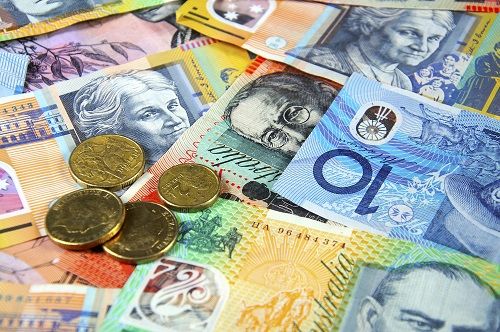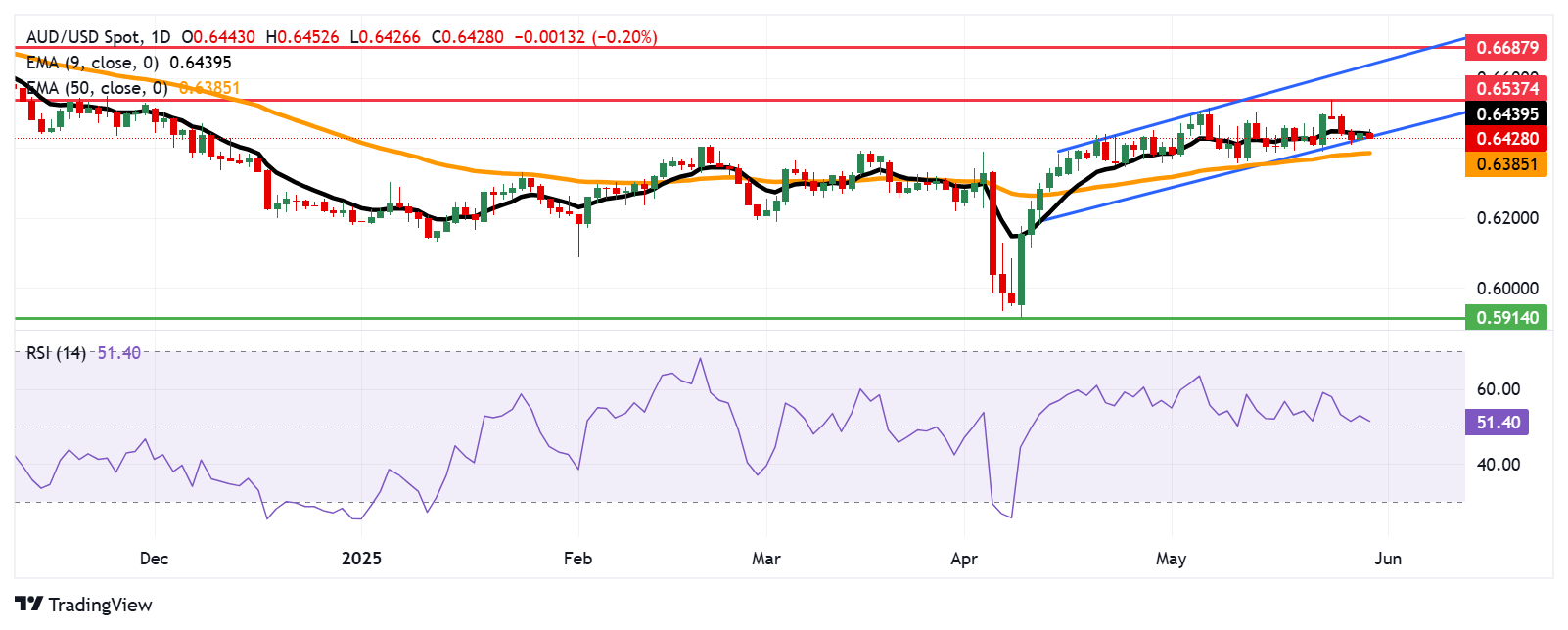
The Australian Dollar holds losses following the disappointing economic data released on Friday.
Australia’s Retail Sales fell 0.1% MoM in April, against the expectations of remaining consistent at a 0.3% increase.
The US Dollar struggles due to trade uncertainty and mixed US economic data.
The Australian Dollar (AUD) edges lower against the US Dollar (USD) on Friday, retracing its recent gains from the previous session. The AUD/USD pair remains subdued following the release of disappointing economic data from Australia.
Australia’s seasonally adjusted Retail Sales declined by 0.1% month-over-month in April, against the expectations of remaining consistent at 0.3% growth. Meanwhile, the monthly Building Permits fell by 5.7%, against the expected increase of 3.1%.
The AUD/USD pair continues to receive downward pressure after a three-judge panel at the Court of International Trade in Manhattan halted US President Donald Trump from imposing "Liberation Day" tariffs from taking effect. The federal court found that Trump exceeded his authority in imposing broad import tariffs and declared the executive orders issued on April 2 unlawful. However, Trump appears unlikely to back down, posting on his social media app Truth Social that he is on a "Mission from God".
In Australia’s close trading partner, China, Securities Times reports that analysts believe that the People’s Bank of China (PBoC) may boost Pledged Supplementary Lending (PSL). This move would offer low-cost, long-term funding to policy banks, which in turn support government-prioritized sectors like housing, urban redevelopment, and major infrastructure projects.
Australian Dollar depreciates despite weaker US Dollar amid trade uncertainty, mixed data
The US Dollar Index (DXY), which measures the value of the Greenback against six major currencies, is extending its losses for the second consecutive day and trading at around 99.20 at the time of writing. The US Dollar (USD) depreciated after the release of mixed United States (US) economic data. Traders will likely observe the US April Personal Consumption Expenditures (PCE) Price Index report, scheduled to be released on Friday.
The preliminary Gross Domestic Product Annualized contracted by 0.2% in the first quarter, slightly better than the expected decline of 0.3%. Personal Consumption Expenditures (PCE) remained consistent at a 3.6% increase quarter-over-quarter in Q1, as expected. Meanwhile, Core PCE climbed 3.4% QoQ against the expected 3.5% increase.
The US Department of Labor (DOL) reported that US Initial Jobless Claims for the week ending May 24 rose to 240K, worse than the previous week’s 226K (revised from 227K). This figure came in above the market consensus of 230K. Additionally, Continuing Jobless Claims rose by 26K to reach 1.919M for the week ending May 17.
Federal Open Market Committee's (FOMC) Minutes for the latest policy meeting, released on Wednesday, indicated that Federal Reserve (Fed) officials broadly agreed that heightened economic uncertainty justified their patient approach to interest-rate adjustments. Fed officials emphasized the need to keep interest rates unchanged for some time, as recent policy shifts cloud the US economic outlook.
The US fiscal deficit could increase further when Trump's “One Big Beautiful Bill” is on the way to the Senate floor for voting, increasing the risk of bond yields staying higher for longer. Higher bond yields can keep borrowing costs higher for consumers, businesses, and governments. Trump’s bill is expected to increase the deficit by $3.8 billion, as it would deliver tax breaks on tip income and US-manufactured car loans, according to the Congressional Budget Office (CBO).
US Senator Ron Johnson told CNN on Sunday that "I think we have enough votes to stop the process until the president gets serious about spending reduction and reducing the deficit.” Johnson added, “My primary focus now is spending. This is completely unacceptable. Current projections are a $2.2 trillion per year deficit.”
Moody’s downgraded the US credit rating from Aaa to Aa1, following similar downgrades by Fitch Ratings in 2023 and Standard & Poor’s in 2011. Moody’s now projects US federal debt to climb to around 134% of GDP by 2035, up from 98% in 2023, with the budget deficit expected to widen to nearly 9% of GDP. This deterioration is attributed to rising debt-servicing costs, expanding entitlement programs, and falling tax revenues.
The Trump administration has halted some sales of jet engines, semiconductors, and certain chemicals to China. The New York Times cited two familiar sources saying that this action is a response to China’s recent export restrictions on exports of critical minerals to the US.
The AUD could face challenges as the Reserve Bank of Australia (RBA) is expected to deliver more rate cuts in the upcoming policy meetings. The central bank acknowledged progress in curbing inflation and warned that US-China trade barriers pose downside risks to economic growth. Governor Michele Bullock stated that the RBA is prepared to take additional action if the economic outlook deteriorates sharply, raising the prospect of future rate cuts.
Australian Dollar remains below nine-day EMA near 0.6450 barrier
The AUD/USD pair is trading around 0.6430 on Friday, indicating a potential of weakening bullish bias. The technical analysis of the daily chart suggests that the pair is hovering around the ascending channel’s lower boundary. The short-term price momentum weakens as the pair remains below the nine-day Exponential Moving Average (EMA). However, the 14-day Relative Strength Index (RSI) is positioned slightly above the 50 mark, suggesting a bullish bias is still active.
The AUD/USD pair could test the immediate barrier at the nine-day EMA of 0.6439, followed by the 0.6537, a six-month high recorded on May 26. A breach above this crucial resistance zone could revive the bullish bias and support the pair to approach the upper boundary of the ascending channel around 0.6640.
On the downside, a break below the channel could lead the AUD/USD pair to test the 50-day EMA at 0.6385. A breach below this level could weaken the medium-term price momentum and put downward pressure on the pair to approach 0.5914, the lowest since March 2020.
AUD/USD: Daily Chart

Australian Dollar PRICE Today
The table below shows the percentage change of Australian Dollar (AUD) against listed major currencies today. Australian Dollar was the weakest against the Japanese Yen.

The heat map shows percentage changes of major currencies against each other. The base currency is picked from the left column, while the quote currency is picked from the top row. For example, if you pick the Australian Dollar from the left column and move along the horizontal line to the US Dollar, the percentage change displayed in the box will represent AUD (base)/USD (quote).
* The content presented above, whether from a third party or not, is considered as general advice only. This article should not be construed as containing investment advice, investment recommendations, an offer of or solicitation for any transactions in financial instruments.


